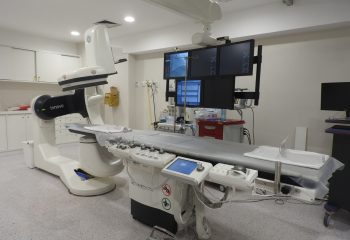Case study: Rogers v Whitaker (1992) HCA 58 – 175 CLR 479
What would you do if a doctor offered to “fix” an injury that had plagued you since childhood, and advises that he could restore it to a condition even better than before your accident? Most of us would definitely consider it, and in 1992, Maree Whitaker took her doctor up on this exact offer, but ended up in a horrifying situation.
Medical negligence has always been a complex term in Australian law.The following case of Rogers v Whitaker (1992), set a new standard for medical negligence as the High Court introduces the ‘failure to warn’ principle.
Whitaker Sues Rogers
Following the surgery, Whitaker sued Rogers in the Supreme Court of NSW for damages caused by medical negligence. Ms Whitaker subsequently won and was awarded over $800,000. Rogers inevitably appealed to the High Court, arguing that the issue should be resolved with the application of the ‘Bolam’ Principle.
The Bolam Principle
In England, the approach to similar medical negligence problems had been determined by the Bolam rule. The case, which inspired the ruling, was heard in the 1950s, and involved a patient who was injured whilst receiving ECT treatment without the prior administration of a relaxant drug. This evidence lead to the Court formulating the following:
“A doctor is not negligent if he acts in accordance with a practice accepted at the time as proper by a responsible body of medical opinion even though other doctors adopt a different practice. In short, the law imposes the duty of care: but the standard of care is a matter of medical judgment.”
It followed from this rule that as long as a sufficient number of medical practitioners adopted the practice in question, the practitioner sued would have a complete defence.
However, the Bolam rule is directed towards the actual provision of treatment, whereas Rogers v Whitaker was concerned with advice about risks involved in treatment. In cases decided after Bolam, some judges expressed the view that the rule should only apply in cases involving negligent treatment or surgery, but not where the issue was the quality of the advice or information given. In Rogers v Whitaker the Court also decided that the rule should be restricted in that exact way.
Important Factors
Two crucial factors contributed the case of Rogers vs Whitaker.
First, Ms. Whitaker was unaware of the risks of the surgery, as Rogers had failed to state the concerns prior to the treatment. Second, Ms. Whitaker would not have been prepared to take the risk of loss of her sight had she been informed of the risk. In these circumstances the court found there to be no reason as to why the practitioner should not be held liable for negligence, when a simple warning could have avoided this consequence. Mr. Roger’s appeal was denied.
Conclusion
Medical negligence claims can be quite difficult to resolve, and in most instances, require the knowledge of an experienced personal injury practitioner to distil the facts and identify the legalities.
The body of law attached to Medical Negligence continues to expand incrementally with technological and procedural advances in medicine, and there will always be an inherent risk in any medical procedure. Apart from patients who need to inform themselves as much as possible before a medical procedure, Medical practitioners themselves also need to continually inform themselves of the latest and best practices for their area of expertise.
If you believe that you have suffered injury as a consequence of negligent action, or are a medical practitioner in need of advice, please contact Longton Legal for an obligation free initial consultation.
*Disclaimer:This is intended as general information only and not to be construed as legal advice. The above information is subject to changes over time. You should always seek professional advice before taking any course of action.*








